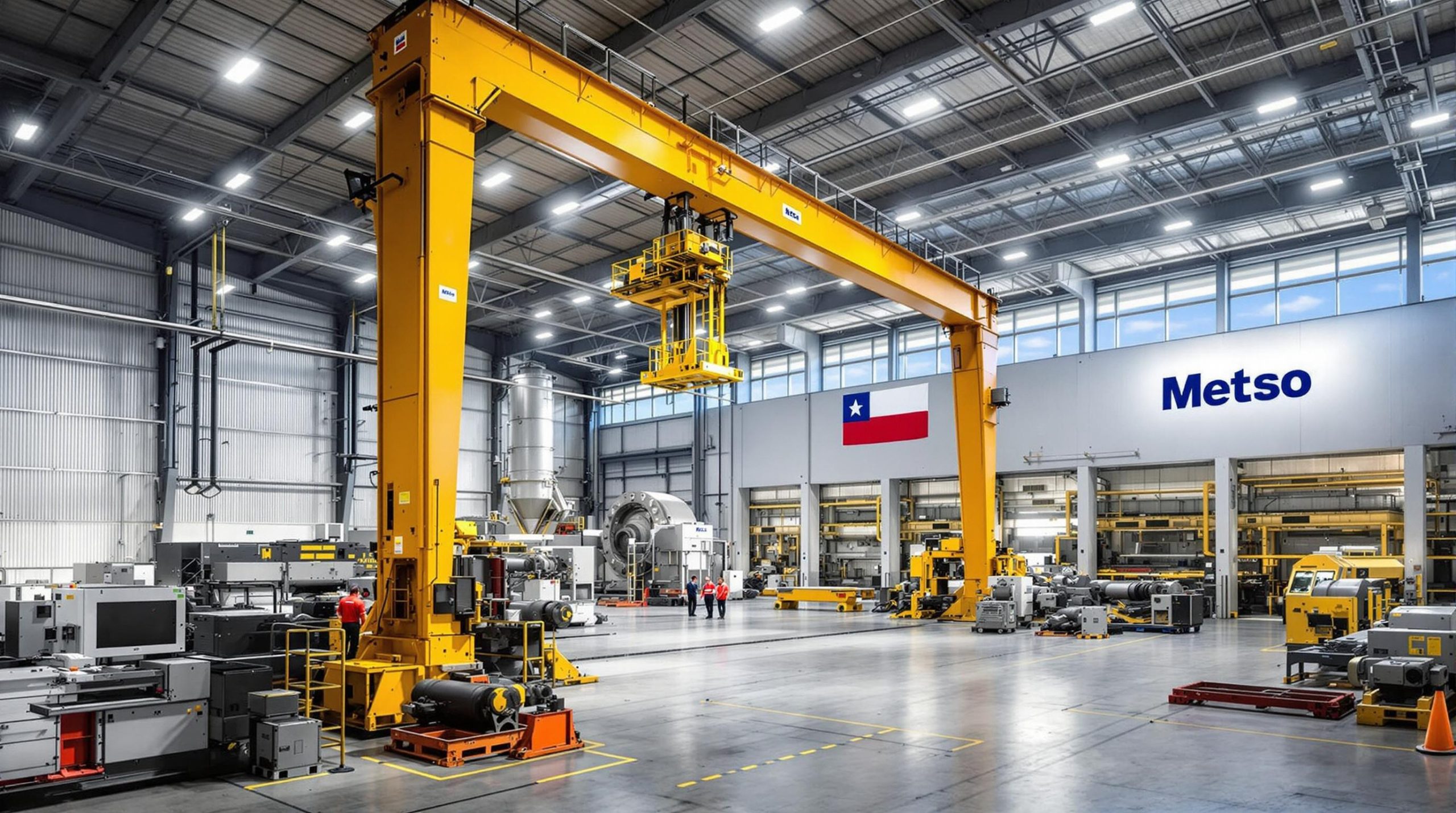Understanding the Alkane-Mandalay Merger: Creating a Diversified Gold Producer
What Makes the Alkane Resources and Mandalay Resources Merger Significant?
The strategic combination of Alkane Resources (ASX:ALK) and Mandalay Resources creates a diversified gold and antimony producer with substantial production capacity and strong financial positioning. This merger establishes a mid-tier gold producer with operations spanning two continents, positioning the combined entity for significant market growth and potential revaluation.
The transaction represents a pivotal moment in Australia's gold sector, bringing together complementary assets to create a more resilient business model with expanded operational footprint and enhanced financial capabilities.
"If we look back as if the last 12 months we'd been merged the whole time, then we would have done a bit over 160,000 ounces and generated close to $100 million worth of cash into the bank. So post growth, post tax, post everything," explained Nic Earner, MD & CEO of Alkane Resources.
Key Merger Highlights
| Metric | Details |
|---|---|
| Combined Production | 160,000+ gold equivalent ounces annually |
| Cash Flow Generation | Approximately $100 million over past 12 months |
| Pro Forma Cash Position | A$218 million with no significant debt |
| Operating Assets | 3 producing mines across Australia and Sweden |
| Exploration Budget | A$40 million allocated for near-mine exploration |
| Listing Status | Dual listing on ASX and TSX |
| Exchange Ratio | 7.875 Alkane shares per Mandalay share |
With gold price highs analysis showing prices trading consistently above A$5,000 per ounce, the combined entity is well-positioned to generate strong margins and reinvest in both organic growth and strategic acquisitions.
How Does the Combined Production Portfolio Look?
Multi-Asset Production Base
The merged entity now operates three distinct producing assets across two continents, significantly reducing single-asset risk and creating operational redundancy that neither company previously enjoyed.
Each asset brings unique characteristics to the portfolio, creating a balanced mix of open-pit and underground operations, varying ore types, and processing methodologies:
-
Tomingley Gold Mine (New South Wales, Australia)
- Processing capacity: 1.2 million tonnes annually
- Focus: Open-cut expansion following highway relocation
- Mining method: Transitioning from underground to expanded open-pit
- Geology: Structurally controlled orogenic gold system
-
Costerfield Gold & Antimony Mine (Victoria, Australia)
- Processing capacity: 140,000 tonnes annually
- Mining method: High-grade vein mining
- Development focus: True Blue extension
- Notable feature: Australia's only antimony producer
- Geology: Narrow-vein, high-grade gold-antimony mineralization
-
Björkdal Gold Mine (Northern Sweden)
- Processing capacity: 1.4 million tonnes annually
- Development focus: Grade optimization and volume increases
- Mining method: Combined open-pit and underground operations
- Geology: Orogenic gold deposit with extensive quartz veining
This diversified portfolio reduces single-asset risk while providing operational stability across premier mining jurisdictions, creating a more resilient business model than either company possessed independently.
Industry Context: In the mid-tier gold space, single-asset producers typically trade at valuation discounts due to concentration risk. The three-asset portfolio significantly mitigates this risk factor while maintaining operational focus in tier-1 jurisdictions.
What Strategic Growth Plans Does the Combined Entity Have?
Three-Pillar Growth Strategy
The company has articulated a clear three-pillar approach to growth, balancing organic expansion, strategic acquisitions, and market positioning to drive shareholder returns.
-
Maximizing Existing Asset Value
- Completing highway relocation at Tomingley to enable open-cut expansion
- Developing the True Blue extension at Costerfield
- Optimizing grade and volume at Björkdal
- Converting resources to reserves across all operations
- Implementing targeted operational efficiency improvements
-
Strategic Acquisitions
- Target criteria: 80,000-120,000 ounce annual producers
- Focus on permitted or near-permitted assets
- Timeline: Production additions by 2027
- Geographic preference: Australia and other tier-1 jurisdictions
- Financing approach: Self-funded from existing cash reserves
-
Market Re-rating Through Enhanced Scale
- Leveraging increased production profile for valuation uplift
- Improving liquidity through dual ASX/TSX listing
- Pursuing potential index inclusion opportunities
- Building institutional investor appeal through scale
- Enhancing market visibility through expanded analyst coverage
As Nic Earner noted, "Clearly we're not the kind of people that are going to go and get a $3 billion asset. So the next leg is probably something in the 80 to 120,000 ounce per year range with reasonable life, reasonable growth where maybe it needs to be developed, but it's probably already permitted."
This disciplined approach to growth focuses on value creation rather than growth for growth's sake, maintaining the company's commitment to financial prudence while pursuing opportunities that enhance the production profile.
How Strong is the Financial Position?
Capital Allocation Framework
The merger has fundamentally transformed the company's financial capabilities, creating one of the strongest balance sheets among mid-tier gold producers. This financial strength provides exceptional flexibility for both operational initiatives and strategic growth.
- Robust Cash Position: A$218 million pro forma cash with no significant debt obligations
- Strong Cash Generation: Nearly $100 million in annual cash flow from operations
- Exploration Investment: A$40 million allocated to near-mine exploration annually
- Regional Exploration: Less than $5 million directed to greenfields exploration
- Acquisition Capacity: Substantial financial flexibility for growth-focused M&A
- Hedging Strategy: Conservative approach with less than 20% of production hedged
"It certainly decouples the need to chase a debt repayment to aggressively pursue reserve life only in one mine when potentially more profitability for the money could be in other places," explained Earner, highlighting how the merged entity's balance sheet strength enables more strategic capital allocation decisions.
The company has adopted a modern approach to hedging, with Earner noting that "Investors have shifted to preferring to see the purchase of puts as an insurance cost as distinct from anything that caps the upside." This approach maintains exposure to gold market performance upside while providing downside protection.
This financial strength provides exceptional flexibility to pursue both organic growth and strategic acquisitions without requiring dilutive equity raises or restrictive debt financing.
What Operational Strengths Support Future Success?
Track Record of Delivery
Both legacy companies brought strong operational execution capabilities to the merger, creating a combined entity with a demonstrated ability to deliver on commitments and achieve operational targets.
- Guidance Achievement: Alkane has met production guidance in all but one year since first gold pour in FY2014
- Operational Reliability: When Alkane missed guidance once, it was by only 3,000 ounces below the bottom range
- Cash Generation Focus: Mandalay demonstrated consistent cash flow generation in recent years
- Cultural Alignment: Similar operational philosophies and lean corporate structures
- Technical Expertise: Combined team with extensive experience in various mining methods
"We have a culture within the group of making sure we deliver on guidance. I think that's step one – people want to know that you can do the things that you want to do," emphasized Earner, highlighting the operational discipline that forms the foundation of the merged entity.
This consistent operational performance provides credibility for future growth projections and builds market confidence in management's ability to execute on strategic initiatives.
What Synergies Will Drive Additional Value?
Integration Benefits
While management emphasizes that synergies are not the primary value driver, several efficiency opportunities exist that will enhance returns for shareholders over time.
- Procurement Efficiencies: Several million dollars in annual savings through consolidated Australian purchasing
- Capital Allocation Optimization: Ability to direct investment to highest-return opportunities across the portfolio
- Tax Implications: Favorable structuring benefits from the transaction
- Corporate Structure: Maintained lean overhead with minimal duplication
- Operational Knowledge Sharing: Cross-pollination of best practices across sites
"There is a really similar culture in the two companies, which made the transaction so simple," noted Earner, highlighting the cultural compatibility that facilitates smoother integration and faster realization of operational benefits.
Unlike many mining mergers that promise significant synergies but struggle to deliver them, the Alkane-Mandalay combination takes a conservative approach by focusing on tangible, achievable efficiencies while maintaining operational continuity at each site.
How Does Commodity Diversification Impact the Investment Thesis?
Gold-Focused with Strategic Diversification
While primarily a gold producer, the merged entity maintains meaningful exposure to antimony through the Costerfield operation, providing a strategic differentiator in the mid-tier gold space.
- Revenue Mix: Antimony contributes less than 10% of company profits
- Strategic Metal: Antimony is classified as a critical mineral with supply constraints
- Market Positioning: Maintains gold-focused investment thesis while providing commodity diversification
- Currency Exposure: Natural hedging through operations in multiple currency zones
- Supply Chain Significance: Antimony has applications in flame retardants, batteries, and defense industries
The antimony production from Costerfield represents a strategic advantage as global supply remains concentrated in China, which controls approximately 60% of world production. As a critical mineral on many countries' strategic lists, strategic antimony insights suggest antimony exposure provides a unique value proposition without dominating the company's revenue profile.
This balanced approach provides some commodity diversification benefits while maintaining the primary gold production focus that investors seek.
What Makes This an Attractive Investment Opportunity?
The Investment Thesis
The Alkane Resources and Mandalay Resources merger presents several compelling investment attributes that position it as an attractive opportunity in the mid-tier gold space:
- Scale and Diversification: 160,000+ ounce producer across three jurisdictions, reducing single-asset risk
- Cash Generation Power: Strong balance sheet with A$218 million cash and ongoing operational cash flow
- Proven Management Track Record: Consistent operational delivery and guidance achievement
- Clear Growth Pipeline: Well-defined expansion opportunities at each operation
- Valuation Re-rating Potential: Enhanced scale and liquidity positioning for market re-rating
- Strategic Acquisition Platform: Financial strength enabling accretive growth-focused M&A
- Jurisdictional Quality: Operations in premier mining jurisdictions providing political stability
"If you look at us versus our peers, doing over 160,000 ounces in Australia with a good look ahead of that, putting cash in the bank on a regular basis, well, not many of those people are less than 1.4, 1.5 billion Australian in market cap," noted Earner, highlighting the potential valuation opportunity relative to peers.
The combination addresses many of the challenges that typically constrain mid-tier producers, including limited financial flexibility, single-asset risk, and restricted growth options, creating a unique investment proposition in the gold sector.
What Industry Trends Does This Merger Reflect?
Gold Sector Consolidation Context
The transaction exemplifies broader consolidation trends within the gold mining sector, which has seen increasing M&A activity driven by the need for scale, operational diversification, and financial strength.
- Scale Imperative: Companies seeking production scale to attract institutional investment
- Single-Asset Risk Mitigation: Diversification across multiple operations reducing operational vulnerabilities
- Financial Strength Requirements: Building capital capacity for growth in a capital-intensive industry
- Liquidity Enhancement: Pursuing improved trading volumes through increased market capitalization
- Jurisdictional Focus: Prioritizing operations in stable, mining-friendly regions
- ESG Considerations: Meeting growing investor expectations for responsible mining practices
The gold mining sector has undergone significant transformation in recent years, with investors increasingly favoring producers with multiple assets, strong balance sheets, and clear growth trajectories. Single-asset producers often face valuation discounts due to concentration risk, while companies with scale and diversity tend to command premium valuations.
The favorable gold price forecast environment (above A$5,000 per ounce) creates compelling economics for previously marginal resources while extending mine lives through reduced cutoff grades.
What Near-Term Catalysts Could Drive Share Price Performance?
Growth Milestones
Several upcoming developments could serve as share price catalysts, providing investors with visible milestones to track execution against the strategic plan:
- Tomingley Highway Relocation: Enabling expanded open-cut mining operations
- True Blue Extension Development: Advancing high-grade opportunities at Costerfield
- Björkdal Grade Optimization: Implementation of initiatives to improve head grades
- Resource-to-Reserve Conversions: Extending mine life visibility across all operations
- Exploration Results: Outcomes from the A$40 million near-mine exploration program
- Potential Acquisitions: Strategic additions to the production portfolio
- Index Inclusion: Possible addition to relevant mining indices driving passive investment flows
The company's substantial exploration budget provides potential for resource expansion and discovery news flow, while the strong balance sheet positions it to act decisively on acquisition opportunities that meet its strategic criteria.
These catalysts provide multiple avenues for potential share price appreciation beyond the baseline operational performance, offering investors several ways to win from the investment thesis.
Conclusion: A Transformed Mid-Tier Gold Producer
The Alkane-Mandalay merger creates a diversified, cash-generating gold producer with the scale, operational expertise, and financial strength to pursue meaningful growth. With three producing assets across premier mining jurisdictions, a robust balance sheet, and clear strategic direction, the combined entity is well-positioned to deliver value through both operational excellence and strategic acquisitions.
The transaction addresses key sector challenges including single-asset risk, limited growth capital, and market liquidity constraints, while positioning the company to benefit from strong gold prices and growing institutional interest in mid-tier producers. For investors seeking exposure to gold with operational diversity, strong cash generation, and clear growth potential, the merged entity represents a compelling opportunity in the undervalued gold stocks analysis segment.
Disclaimer: This article contains forward-looking statements regarding the Alkane Resources and Mandalay Resources merger, potential synergies, and growth opportunities. Future results may differ materially from these projections. Investors should conduct their own due diligence before making investment decisions.
FAQ: Alkane-Mandalay Merger
What was the exchange ratio for the merger?
The transaction saw Alkane acquire all outstanding Mandalay shares at an exchange ratio of 7.875 Alkane shares per Mandalay share, as detailed in the official merger announcement.
How much antimony exposure does the combined company have?
Antimony from the Costerfield operation contributes less than 10% of company profits, providing some commodity diversification while maintaining the primary gold focus.
What is the company's approach to hedging?
The company maintains a conservative hedging approach with less than 20% of production hedged, preferring to maintain upside exposure to gold prices while using put options as insurance against downside risk.
What criteria is management using for potential acquisitions?
Management is targeting operations producing 80,000-120,000 ounces annually with reasonable mine life and growth potential, focusing on permitted or near-permitted assets in preferred jurisdictions.
How does the dual listing benefit shareholders?
The dual ASX and TSX listing is designed to broaden the investor base and improve liquidity, potentially contributing to valuation re-rating and index inclusion opportunities, according to Junior Mining Network's coverage.
Want to Profit from the Next Major ASX Mineral Discovery?
Stay ahead of the market with Discovery Alert's proprietary Discovery IQ model, delivering instant notifications on significant ASX mineral discoveries just like those that have generated substantial returns for early investors. Explore historic discovery returns and begin your 30-day free trial today at https://discoveryalert.com.au/discoveries/.




